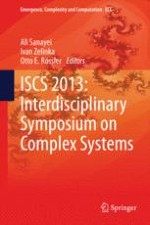2014 | OriginalPaper | Chapter
How is the Process Network Organized and When Does it Show Emergent Properties in a Forest Ecosystem?
Authors : Juyeol Yun, Minseok Kang, Sehee Kim, Jung Hwa Chun, Chun-Ho Cho, Joon Kim
Published in: ISCS 2013: Interdisciplinary Symposium on Complex Systems
Publisher: Springer Berlin Heidelberg
Activate our intelligent search to find suitable subject content or patents.
Select sections of text to find matching patents with Artificial Intelligence. powered by
Select sections of text to find additional relevant content using AI-assisted search. powered by
